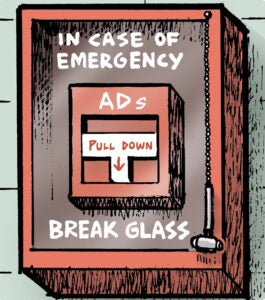Most digital marketers know the importance of personalized ad creative. But even those brands often use a one-size-fits-all landing page.
If someone clicks on an ad because it resonates with them, but the landing page doesn’t build on that messaging, they might not follow through to the next step in the lead capture process, resulting in a higher customer acquisition cost (CAC).
That’s the problem startup Fibr hopes to solve with its new product, Web Pilot, which creates AI-generated, 1:1 personalized landing pages. The product launched this Thursday alongside an announcement that the startup raised $1.8 million in a pre-seed funding round.
A “post-click platform,” as Fibr CEO and Founder Ankur Goyal refers to it, can fill the gap created by third-party cookie deprecation, because it relies on first party-data, including data collected with consent directly from social ad platforms and individual websites.
Getting personalized
Web Pilot uses an AI tool built from several APIs, including LLMs from OpenAI, Anthropic and Hume (which specializes in emotion measuring) and text-to-image generators like Midjourney and Stability, which created Stable Diffusion.
After users provide Fibr with their website URL, brand guidelines and other assets like logos and product images, Web Pilot generates ads and landing-page content based on that data. The tool won’t be trained on proprietary client data and can only pull from what’s publicly available online – and what it’s given, of course. Over time, though, it can learn what works best for the brand using it, based partly on the success of its own generated landing pages.
“We just want to make sure that the content that we produce is actually on-brand language and it’s not just generic output [or] robotic content,” said Goyal.
Still, if users don’t supply Fibr with branded assets, its tools will likely yield generic and robotic assets, at least when playing around with the free version of Fibr’s AI Blocks. But its intended use is to repurpose the specific assets it receives from brand managers, not to produce new ones out of whole cloth.
In fact, most Fibr customers opt to approve and tweak the generative AI content rather than allowing it to post automatically. Not that anyone wants to let AI fully take the reins, at least not yet. “No marketing manager does it because nobody trusts AI right now,” Goyal admitted.
Fit to scale
Despite his realism about generative AI’s current creative limitations, Goyal believes its integration into Web Pilot is an ideal use case for the technology.
“We feel AI might not be great at creating something from scratch. But it could be really, really good [at] repurposing a blog article into a Facebook ad or repurposing a customer quote into a Google ad,” he said.
A marketer doesn’t have the bandwidth to do that kind of constant iteration quickly enough at scale, he said. Nor is it particularly fulfilling work to have to slightly rework the same ad copy or image over and over again after writing it the first time, at least in Goyal’s opinion as a former marketer himself. (He spent three years at Nestle’s R&D Centre in India and sold his previous startup, a women’s health care product company called andMe, to India-based D2C holding company GlobalBees in 2021.)
“We don’t take away your job,” Goyal said of Fibr’s platform. “We basically take away your operational hassle.”
Speaking of operations: While Fibr has enterprise clients in both North America and India, it’s designed for “any consumer company doing lead generation,” particularly those targeting new customers who spend a lot on their first purchases. These customers often cost more to acquire, but it’s worth it because they have a higher overall lifetime value.
For smaller companies, Fibr’s unusual business model may also help reduce costs. Instead of a flat subscription rate, it charges users for “credits,” the first 100 of which are free upon signing up. These credits can be spent on actions within the platform, the idea being that you only pay when you’re using the tool and not for the time when you aren’t.
As Fibr acquires more customers, it plans to use its $1.8 million in funding to expand its business strategy on a global scale, as well as hire more staff and generate new client leads.
But is Fibr raising money in the middle of an AI bubble that will eventually – or perhaps shortly – pop? Since Fibr’s goal is reducing CAC and increasing conversion rates, and the tech is supplemental to that mission, Goyal views the company as insulated from a potential market downturn.
“AI is an enabler,” Goyal said. “It’s not a core proposition of our product.”














